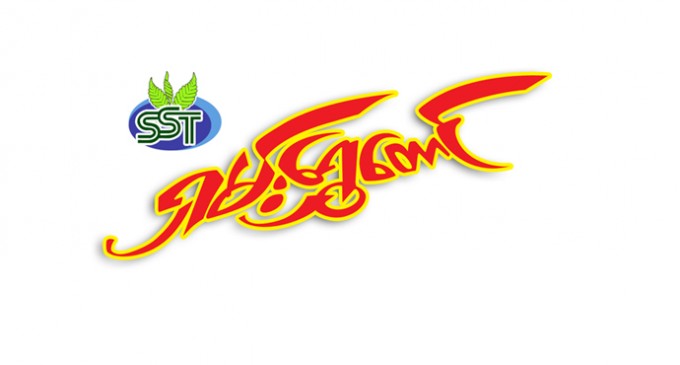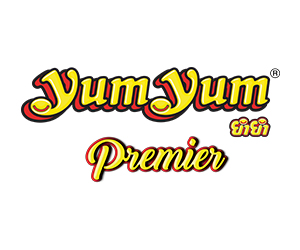‘‘Shan Shwetaung Shooshe’’ pickled tea-leaves

The pickled tea-leaves is a snack popular with most nationalities in Myanmar, featuring in ceremonies and social occasions as a dessert-like item. It is often served as a salad to visitors in a Myanmar home. Then it has gone on the market in packing as an instant-made snack cheap enough to suit a child’s pocket-money. Nowadays
bundles of pickled-tea-leaves pockets at mom and pop store in the neighbourhood is a common sight. Ko Myo Win Aung, leading person of Shan Shwetaung Pickled-tea-leaves enterprise, Mandalay is the initiator of 50 kyat Shooshe lephet market. He has been interviewed as follows.

Please introduce shooshe thing of Shan Shwetaung’s.
Shooshe lephet (hot tasting pickled tea leaves) has long been in use, and is nothing new. The packing design is my own, including the design of ‘Shooshe’ word.
The business has been inspired by our family’s food habit. The pickled tea-leaves prepared to a proper consistency by my sisters was found to be popular with most people. Interested in packing and marketing, I decided to commercialize it after learning the proportions of ingredients. The business is now about seven years old. At first I concentrated like others on the product’s quality and my packing remained so-so. I was unable to penetrate the market.
Later I experimented with new Packing Design, though costly, for 50 kyats packets. That design has since been registered and the goods are now in consumer’s favour. And the market has been expanded town by town.
We use zayan (superior class of tea leaves) only, coming from Zayangyi village, Namhsan in northern Shan State. Lephet production is widespread, like, Kachin State, Mogok, Kyauk-me, NamhSan which in turn has two parts, north NamhSan and south NamhSan. Our lephet comes from north NamhSan. NamhSan by nature has rich soil to produce good quality tea leaves.
From where do you acquire your pickled tea-leaves …

There are two kinds of lephet here–the shooshe (with emphasis on chilli for hot taste) and processed zayan sprouts. For the shooshe the pickled tea leaves and carambola are first ground individually. These and edible oil, salt and chilli in proportionate amounts are then mixed in a machine.
Various stages of shooshe lephet production please …
For the processed zayan sprouts, choice sprouts are washed in water which is then squeezed out. Lime juice is added in for sourn-ess. Then the sprouts together with groundnut oil, salt and sugar are mixed in a machine.
Afterwards packing follows. The whole production takes a day only.
Quality Control …
Our strong point is No chemicals used. The chilli used is of good quality. Turnover of our goods on the market is steady and their freshness remains.
Is laphet only in production …
No. Twice-fried beans, several kinds of fried dried fish, pounded prawn paste, and pickled lime and mango preserved in oil and spices also are produced.
What about green tea …
To some extent only. But customer at our shop should be able to buy lephet-related twice-fried beans, sesamum, pickled ginger shreds, green tea, etc.

And the amount of daily production …
50,000-450,000 packets for the Shooshe only. Similar figure for processed zayan sprouts is around 30,000.
How is distribution going?
Central and upper Myanmar have been covered. Distribution in lower Myanmar remains weak, but Yangon market has been penetrated.
How is distribution carried out?
It has two parts .. out of factory and out of sale centre. We have a sale centre at Zegyo Market where buyers can be catered for on site. If contacted at the factory, the purchased goods will be sent to the bus terminal. Some-thing like a warehouse is kept in Yangon, and purchased goods will be sent to the buying store. But there is no Agent yet.
What is the strength of workers in your lephet industry?
Around 300 females and around 20 males. Boys are mainly responsible for bringing pickled tea-leaves to proper consistency, and girls for packing it. At present filling up the Packets by machine is not feasible yet, but they are closed up by machines. Workforce is considerably large so management problems are incessant.
Any business difficulties …
There are some in the market. But there will be no discounting of ours in the markets where we are already established. Then, by way of seeking new markets, like, producing 25-tical and 50-tical packets with beautiful design, mainly to serve as gifts, is planned.
What about high-end production, and international distribution?
We are trying, but no export plans yet. However, some of our products reach border areas with India, China and Thailand via Kalay-Tamu, Shweli, and Dawei-Kawthoung.
What sectors of your business could expect expanded sales?
Our 50-kyat packet, suitable to the pocket-book of gras roots and middle class, is selling a lot. To children it serves as a snack as well as a sort of ‘curry’. Our high end products with beautiful packing are still low in volume and not selling as much.
What is the difference between main-taining a brand name and establishing a new one on the market?
It is harder to maintain an established name than to establish a new one. Once a household name, your brand has become mass production and not a cottage industry. Quality control as well as personnel control become necessary. If a product’s quality is good it is not difficult to make the brand name famous. A famous brand usually invites com-petitors, then it becomes harder to maintain the current functioning of your business, I think.
How does tea contribute to one’s health?
Lephet has caffeine, and consuming too much of it could invite flatulence. But it could relieve headache, and prevent against cancer, it is learnt.
Anything to add …
I wish a consumer would not think any red-coloured shooshe lephet packet is of Shan Shwetaung brand.
Thank you for the time given to this interview.
Translated by U Khin Aung (English)
./wp-content/uploads/2018/10/Emirate-Online-TDY.png)
















Excellent
Hi, what is the email of this company that provides lehpet? Do they ship internationally?